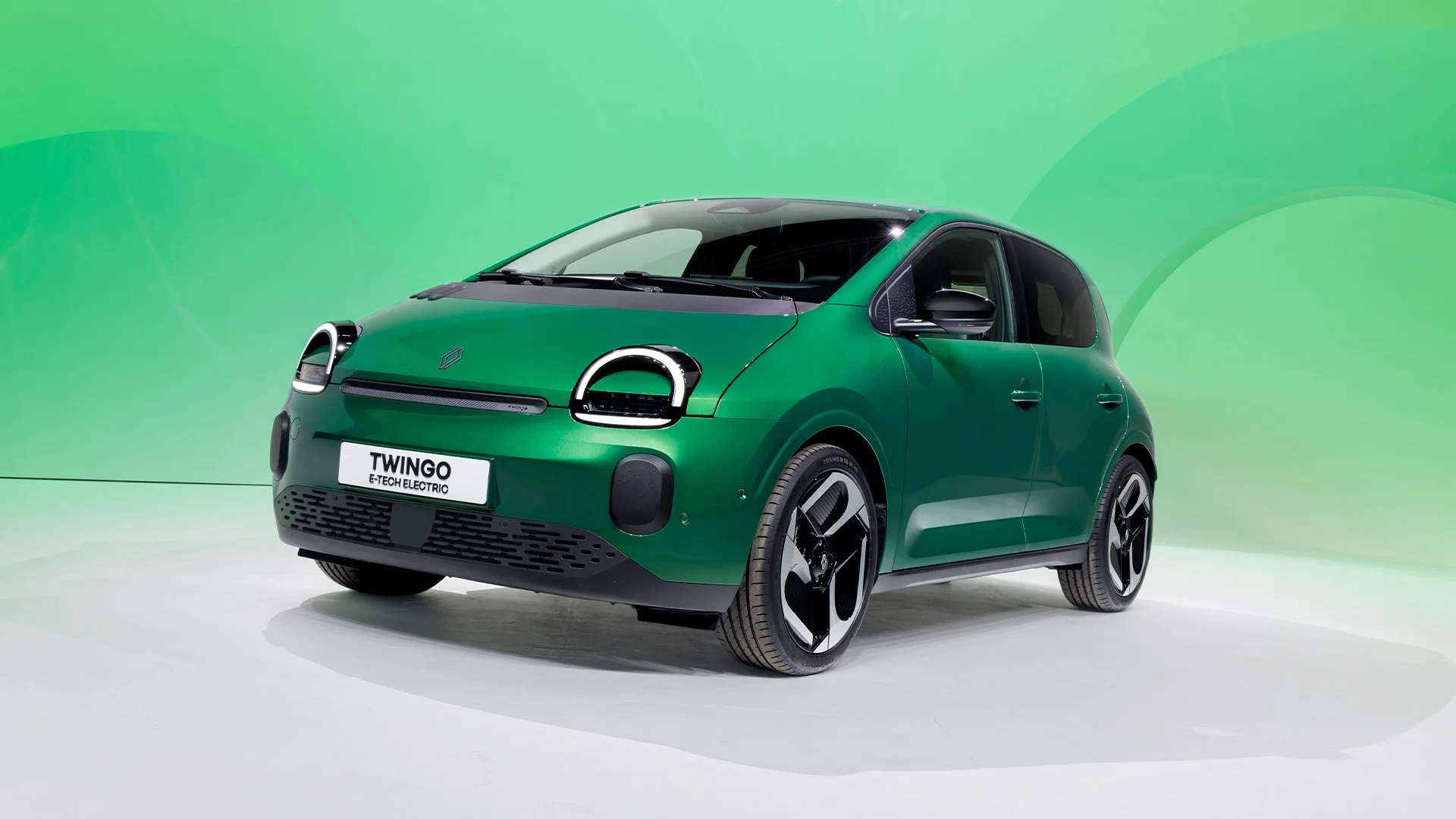The Renault Twingo is back as a full EV with retro styling
Image credits: Renault Group
After what felt like forever, Renault has revealed the new Twingo.
Now in it’s fourth-generation, the Twingo E-Tech electric is now fully electric, sitting on Renault’s AmpR Small platform, shared with the Renault 4 and Renault 5/Alpine A290/Nissan Micra.
The headline here is the design of the Twingo which is a rather enthusiastic nod to the original Twingo which was originally revealed way back in 1992. So it has the cheeky face of the original with LED lights in the same shape as the original headlight cluster, a very similar side profile, although the new one is a five-door only, and a flat-sided bottom.
Other design elements carried over from the original are the three air vents on the top of the bonnet, with one being the cover for the screen washer fluid. There are more fun touches on the exterior, including tiny fins on the taillights and the stylised Twingo badge, which can be found on the front and rear of the car.





Like the original, the Twingo E-Tech will be offered in a range of colours, with the standout ones being Absolute Red, Absolute Green, and Mango Yellow. If you’re buying a Twingo, make sure to buy it in one of these colours.
Inside, the design is a bit safer, which might be down to a cost element and some obvious part sharing with the bigger 4 and 5. Your eyes are initially drawn to the central infotainment screen which is running Renault’s OpenR Link system and has Google built in, which is useful for navigation and general usability.
The driver gets their own, smaller screen which of course displays things like speed, range and the like. Standard business there. Fans of physical controls will like the interior - physical buttons feature on the steering wheel, while the climate control is separate from the infotainment screen, with it’s own dedicated control area with dials and large buttons. However, from what we can tell from the images, the heated seat controls are on the touchscreen. Rather pleasingly, the hazard warning light button is a BIG, red button, which lives rather sensibly on the dashboard.





Elsewhere, there are body coloured trim pieces around the interior, with the largest on the dashboard, which is about two-thirds of the dashboard’s width, with the Twingo logo stamped in. The air vents are a nice touch too, cylindrical in shape but with a + mould on them, which is a nice touch. Also, there are two USB-C sockets on the dashboard for charging all sorts of devices.
When it comes to performance, the Twingo E-Tech has enough not to be a pain to drive, while being powerful enough for zipping in and out of towns and cities. Here are the stats Renault has published:
| Specification | Value |
|---|---|
| Power | 81 bhp |
| Torque | 129 lb ft |
| 0–31 mph | 3.85 seconds |
| 0–62 mph | 12.1 seconds |
| Top speed | 81 mph |
| Weight | From 1,200 kg |
| Battery | 27.5 kWh (usable), LFP |
| Range | Up to 163 miles (WLTP) |
| Charging | 6.6 kW AC / 11 kW AC / 50 kW DC |
| Charging time (wallbox, 10% → 100%) | 4 hours 15 minutes |
| Charging time (11 kW AC, 10% → 100%) | 2 hours 35 minutes |
| Charging time (50 kW DC, 10% → 80%) | 30 minutes |
According to Renault, these stats are appropriate for the use case and intended customer base for the Twingo, with the average driver doing 22 miles a day which in theory, means you should only have to charge once a week.
And yes, the Twingo E-Tech makes use of a LFP (lithium iron phosphate) battery, which is more cost-effective than a NMC (nickel-manganese-cobalt) battery, despite the lower energy density. LFP is better suited for a small, city car like the Twingo, and helps it be more affordable to customers.
One-pedal driving is available in the Twingo and can be activated through the regenerative braking paddles on the steering wheel.
The Twingo features bidirectional charging, allowing owners to connect a 220V appliance directly to the Twingo’s battery, with up to 3,700W of power via an adapter. So, if you really wanted to, you could hook up a fridge freezer to your Twingo.
If the Renault 5 is anything to go by, the Twingo should be a joy to drive. The relatively quick initial acceleration, low weight and a shared front axle with the bigger 4 and 5, it should be good to throw around town or down a B-road.
Most importantly, it is the price. While the Twingo isn’t as cheap as we initially thought, Renault has said the car should start at under £20,000 when it goes on sale in 2026.
While the Twingo faces competition in the form of the BYD Dolphin Surf, Citroen eC3, Leapmotor T03, Hyundai Inster and the upcoming Volkswagen ID.1, Renault shouldn’t have an issue selling the Twingo based on what we’ve seen with the Renault 5.

